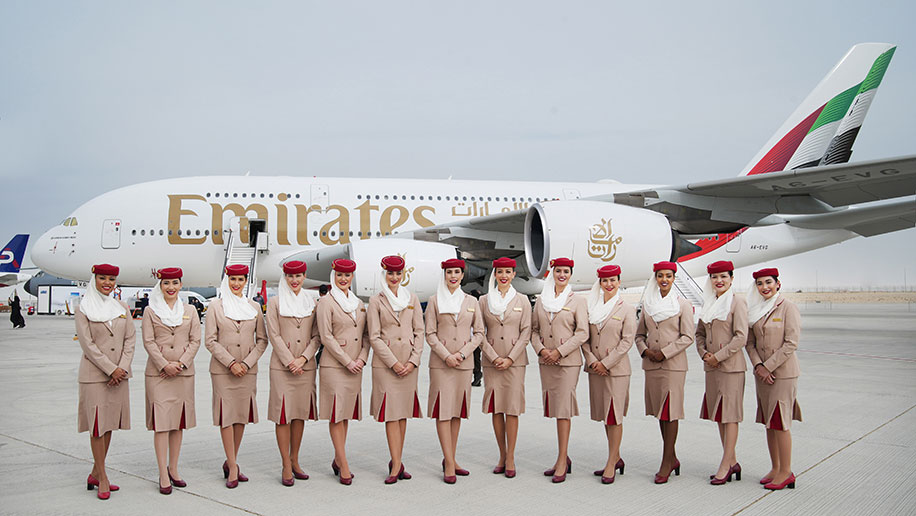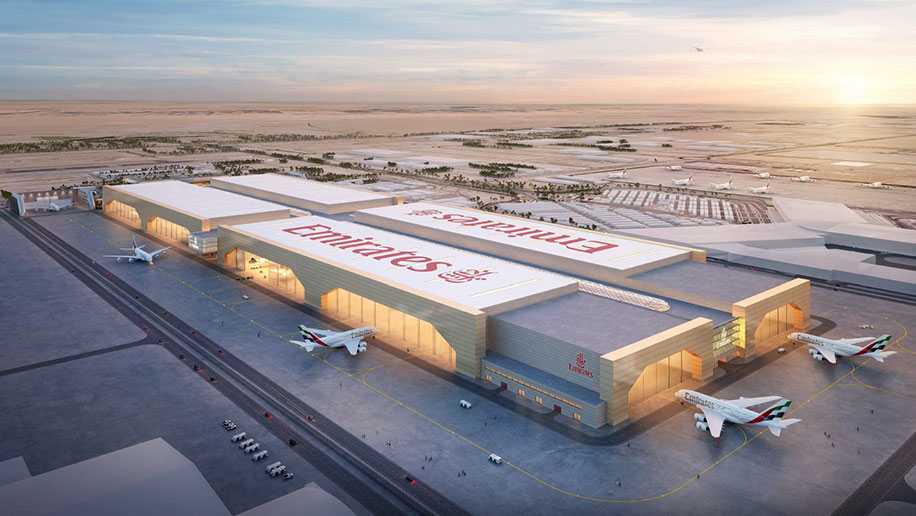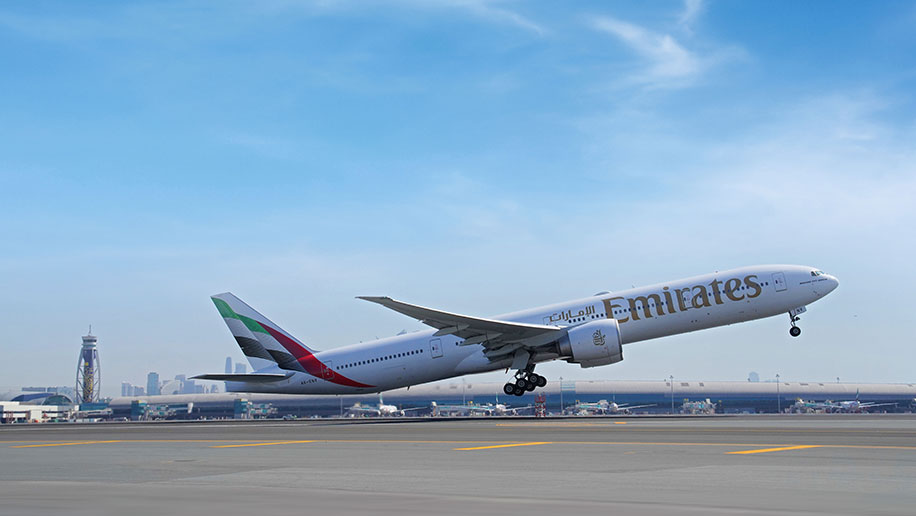
A year ago, Dubai unveiled its new economic roadmap called ‘D33’ which aims to double its GDP by 2033. It set out targets for it to become one of the five leading logistic hubs worldwide, double the volume of its foreign trade and rise to the position of one of the top four global financial centres. Dubai’s aviation ecosystem, including its airports and airlines that facilitate the movement of several million people to Dubai each year, will play a central role in realising that vision.
Dubai’s main airline, Emirates, is already demonstrating tremendous potential. The Emirates Group reported a record annual profit of US$3 billion for the year 2022-2023. It followed that up by announcing at the start of November last year, that it had hit a half-year net profit of US$2.7 billion which was not only a 138 per cent increase over the US$1.2 billion it did in the corresponding period the previous year, but was also nearly approaching the total amount of the previous financial year.
Those handsome profits meant that as of 30 September 2023, the group closed the first half year of 2023-24 with a cash position of US$11.6 billion. It has now already repaid Dhs9.2 billion of its Covid-19-related loans too.
Apart from repaying its debts, it also left the airline in a commanding position to accelerate its growth – and it hasn’t wasted any time in doing so.
By the time the Dubai Airshow 2023 rolled around days after it had announced its half-yearly profit in November, the airline placed a US$52 billion order for 95 Boeing aircraft.
“I think that it will be able to achieve the Dubai D33 strategy and the vision of His Highness Sheikh Mohammed bin Rashid Al Maktoum,” said His Highness Sheikh Ahmed bin Saeed Al Maktoum, Chairman and Chief Executive, Emirates Airline and Group, during a roundtable on the sidelines of Dubai Airshow 2023 in reference to that deal. “He always pushes us to the limits and the minute we reach there and think that’s the end of it, he comes up with another milestone for us to achieve. I think his support and backing, and that of the full team within the government, is what helps us to achieve our targets.”
Emirates’ big announcement at the airshow was accompanied by a major one from flydubai too. That carrier sealed a US$11 billion deal for 30 Boeing 787 Dreamliners. Sheikh Ahmed, in addition to his role at Emirates Group, also serves as the chairman of flydubai. Emirates and flydubai decided to cooperate closely back in 2017 with codeshare flights, coordination on scheduling across their respective networks and implementing a common loyalty programme. When asked whether Emirates and flydubai could at some point operate as a single unified carrier, Sheikh Ahmed says, “That I will leave to time. We coordinate a lot of things between the two airlines – both are owned by the Dubai government. The two teams work closely with each other. If the two teams find another way to work [even closer] together, I will always approve it.”

With Emirates’ Boeing deal at the airshow including 55 777-9s and 35 777-8s, it takes the airline’s 777X order book to a total of 205 units. Emirates has remained a resolutely all-widebody airline, while flydubai which was a single-aisle aircraft operator until now, has decided to venture into the widebody territory with its latest Dreamliner deal – a segment that was until now exclusively Emirates’ within the partnership between the two carriers.
There were natural concerns then that flydubai’s decision would lead to the possibility of either airline cannibalising traffic from the other – something that Sheikh Ahmed is confident will not be the case. “Flydubai has always been on routes that Emirates flies. I think you will see more of this in the future. Let’s take an X airport today that is operated by Emirates, but not by flydubai. If it’s a long-haul route, you might then see both carriers flying to that route.”
As Emirates and flydubai cooperate closer together on both regional and long-haul routes, Emirates is also cooperating closely with UAE’s national carrier Etihad Airways. That arrangement which was announced at the Arabian Travel Market last year will initially take the shape of an “open-jaw” agreement between the two airlines and will allow passengers to the UAE to fly in with one carrier and exit using the other airline.
This level of cooperation would be vital for Emirates to compete with other major airlines in the region – especially newer ones such as Riyadh Air which is set to commence operations in 2025. Riyadh Air has already announced its own strategic agreements with Saudi Arabia’s national carrier, Saudia.
Sheikh Ahmed says that there’s room for more airlines to enter the market and for them to grow as well. “I’ve always said that the Gulf market can take the existing numbers [of airlines], and much more than that. Why should we think that the Gulf market won’t be able to take such a number? When we started here in the UAE, we started with one airline. Today, we have six and we manage. I think adding another one in Saudi Arabia will be good for the competition and we see many countries in Asia, Europe and the Americas with more than one airline.
“Competition is healthy, but you also have to run your business in a way that it will be able to make money and continue.”
On whether Emirates would consider picking up a stake in another airline, Sheikh Ahmed said that it wasn’t part of its plans at present. “We are focused on growing our business here, and we continue to do that.”
Emirates’ peers in the region are adopting starkly different strategies for their future. Qatar Airways, for example, has indicated that it plans to phase out its first class on future incoming aircraft and instead focus on enhancing its business class offering. However, Sheikh Ahmed believes that the first class still holds a bright future for Emirates. “You will see Emirates continue with its first class and you will also see something else that will be delivered within the new aircraft of Emirates which will be coming in the near future – we’ll leave it as a surprise,” he says.

The one cabin class that Emirates has been a pioneer within the region, having introduced it a few months ago, is premium economy. With the addition of Tokyo Narita on 20 December, the airline has now deployed its premium economy cabin to 14 destinations, including the likes of London Heathrow, Sydney, Singapore, New York JFK and San Francisco, among others. “When it comes to our numbers on the premium economy that we have achieved so far, it’s beyond our expectations. This is doing so well that we will continue to see it on different routes,” said Sheikh Ahmed.
Also at the airshow, apart from the Boeing deal, Emirates placed a US$6 billion order for 15 additional Airbus A350-900s. The decision to skip the larger variant A350-1000 was significant considering that the airline’s president Sir Tim Clark has already reportedly flagged concerns over Rolls-Royce engines. Sheikh Ahmed reiterated the commitments that the airline would require from Rolls-Royce. “I need guarantees about when, at what price and then maintenance per hour.”
Among its existing Airbus fleet, its A380s are expected to be in service until the middle of the next decade. Keeping its large fleet of widebodies in top condition was a major consideration when Emirates announced at the airshow that it would invest US$950 million into a new engineering facility at Dubai World Central (DWC). That facility would not only help the airline be entirely self-sufficient for its maintenance, repairs and overhaul requirements, but also allow it to offer spare capacity to other airlines. It will be capable of handling commercial aircraft up to the size of Code F (A380).
Emirates is already the world’s largest operator of the A380, and in November it became the world’s first airline to undertake an A380 demonstration flight with 100 per sustainable aviation fuel (SAF) that was used to power one of its four engines. In October, it also began operating SAF-powered flights from Dubai International (DXB) following an agreement with Shell Aviation for the latter to supply it with 315,000 gallons of blended SAF at its home base. But the current limitations with SAF isn’t just the lack of its widespread production, but the fact that it is still an expensive fuel compared to regular jet fuel. In fact, Emirates in its recent half-yearly 2023-24 financial report already stated that fuel was the largest component of its operating cost (34 per cent). An increase in fuel prices is expected to invariably be passed onto passengers.

In an effort to be a part of the change, rather than waiting on it, Emirates announced a US$200 million aviation sustainability fund that it would allocate to partners undertaking R&D. That fund was announced in May last year, and Sheikh Ahmed says that the airline has spent the time since then carefully vetting who these funds are allocated to. “The minute you say that I have money ready for R&D, you can imagine how many people will come to you and say that they want some of that money. But we have to be very sure that whatever money goes towards R&D, it will help the sustainability programme. And this is why it will take a bit of time to ensure that if we are investing with somebody, we will see a benefit from it when it comes to efficiency.”
As Dubai continues building itself into an economic powerhouse, back in 2021 it announced plans to list 10 state-owned companies so that it could raise the size of its financial market to Dhs3 trillion. The firms that have been listed thus far include Dubai Electricity and Water Authority, Tecom, Salik, Empower and Dubai Taxi Company – the latter of which was listed only a few weeks ago. With Emirates reporting large profits and in the midst of a sizeable expansion, there is speculation that it could be one among the ten to list. “My answer always when it comes to an IPO is to let the government decide, not me. It’s a good thing to see nearly 10 companies in Dubai that will be listed – so far there have been five. But the decision, if you ask me, of whether Emirates will also undergo an IPO is for the government to decide.”
One way or the other, Emirates is making D33 and its goals a near-term reality.












